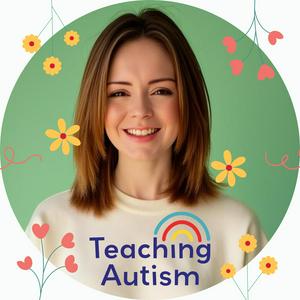How I Organize My Task Boxes Without Losing My Mind
Hey friend! In this episode, I’m diving into one of the most requested topics from teachers like you - how I organize my task boxes without turning into a stressed-out mess surrounded by stray Velcro and mystery pieces. 😂
If you’re a special ed teacher, you know how powerful task boxes can be - for IEP goals, independence, calm-down time, assessment… they’re basically magic. But let’s be honest - once you hit 10, 50, or 1,100 of them (hi, me), keeping them organized can start to feel impossible.
So I’m sharing exactly how I store, label, rotate, and manage my massive collection of task boxes - and how I keep them functional, accessible, and totally doable. I’m even giving you a peek into my digital Task Box Library, which is the heart of my classroom organization.
Let’s get into it!
🧩 In This Episode, I Share:
💬 Why I Love Task Boxes Task boxes are:
Visual, hands-on, reusable
Perfect for literacy, math, fine motor, life skills, sub plans, independent work… basically everything
Low-prep once they’re made — and they save me all year long
🌈 How I Store Them (Without Losing My Sanity) I’m obsessed with rainbow photo cases — you know the ones with the mini boxes inside? I organize mine by:
Theme (like weather, bugs, Christmas)
Skill set (fine motor, CVC, counting)
Month/season (September boxes, Spring theme, etc.)
Each mini box inside has:
A visual of the task
A title + skill label
A little code that matches my inventory list (yep, I have one)
It’s easy to grab what I need fast - even if a student just spilled glue across the table. 😅
📦 Where I Keep It All All of my rainbow photo cases live in my classroom closet - sorted, stacked, and labelled like a cozy little library. I rotate them seasonally and keep the most-used ones at arm’s reach. Think:
“Fall CVC Words”
“Back to School Counting”
“Holiday Life Skills”
💾 A Peek Inside My Task Box Library My Task Box Library is a digital bundle that includes:
1,100+ task boxes
Organized by theme, skill, and month
Training modules on how to organize, assess, and introduce task boxes
Plus student assessment tools to track progress
If you’re already a member — go log in and grab your seasonal boxes and start rotating them! Not a member yet? 👉 Join the Task Box Library
🧠 My Top Task Box Organization Tips:
1. Label Everything Use clear covers with a visual, title, and skill label. Your future self will cry happy tears.
2. Keep an Inventory I use a Google Sheet to track every task box — name, skill, storage spot. Doesn’t have to be fancy, just functional.
3. Use a Weekly Drawer Cart I keep a “Task Boxes for This Week” drawer and switch it out every Friday. No more morning panic.
4. Reuse + Rotate Don’t reinvent the wheel each year. Reuse boxes, rotate them, and just sprinkle in a few new ones when needed.
💛 Why It’s Worth the Effort
Once you’ve got a good system in place, you’ll:
Save time every single week
Support student goals on the fly
Have sub plans prepped without lifting a finger
Never wonder “where did that counting activity go?” again
It’s hands-down one of the best systems I’ve ever implemented.
🛍️ Mentioned in This Episode:
📦 The Task Box Library Everything is printable, leveled, visual, and ready for you. 👉 Join the Library Here
🎒 End of Year Google Drive Bundle Finish the year strong with themed activities, crafts, adapted books, and more. 👉 Grab it here
📚 Back to School Google Drive Bundle Get yourself organized for next year before summer even starts. 👉 Grab it here
🌈 Rainbow Storage BoxesThese are what I use for storing all of my task boxes!🇺🇸 USA Link Here.🇬🇧 UK Link Here.These links are affiliate links, which means I may earn a small commission at no extra cost to you if you make a purchase through one of these links.
One tip that I always give educators, is to add things to your Amazon wish list. Then be sure to share it on social media throughout the year and definitely go and share it on this blog post. Let's help to clear your list!
🏁 Final Thoughts
If your task boxes are currently living in a pile of random tubs and ziplock bags - I see you. Start small. Label one rainbow case this week. It will feel worth it.
Let me know how you’re organizing yours - tag me @teachingautism or send me your best storage hack. Bonus points if it includes rainbow boxes, Velcro rolls, or a wildly satisfying label maker moment. 🤓
Thanks for hanging out with me today - Until next time, keep things visual, stay caffeinated, and label everything! 💛Nikki
